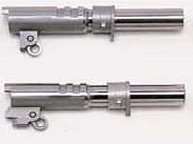
This web page is a collection of information I have gathered from professional pistolsmiths and my own personal experience concerning various ways to optimize the 1911 platform for the 10mm Auto cartridge. It also has some more general 10mm-related information, and some pictures so it looks cooler. As much as possible, I have kept its content limited to professional opinions and first-hand experience, and sought to avoid the inclusion of "pet theories" or hearsay. Additional information, ideas and comments are always welcome.
Like most things, however, extractor selection is not cut and dried. Some pistolsmiths do not particularly favor AFTEC extractors; neither Don Williams nor Ted Yost consider it a "must use for 10mm" part. The AFTEC definitely has the disadvantages of greater complexity and expense compared to a conventional extractor, and it is not compatible with the Colt "Series 80" firing pin block safety. It can be used in a Series 80 gun, but the passive firing pin block safety must be disabled first. These are all things to consider, though I still come strongly on the side of the AFTEC in 10mm use.
The fluted chamber of a Schuemann AET barrel could also ease extraction somewhat, although the AET barrels are on the expensive side... about $230 vs. $150-180 for a normal match barrel. A ramped barrel design will also contain high pressures better than a standard 1911-type barrel, though by the time you make it as reliable as an unramped barrel, this advantage may be small. If you plan on "hot-rodding" the cartridge beyond published load data, a ramped barrel would be a wise investment. The different 1911 barrel types are illustrated below.

Figure 1: Unramped (top) and Ramped (bottom) bushing-style barrels
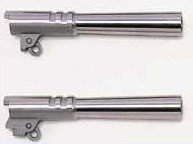
Figure 2: Unramped (top) and Ramped (bottom) bushingless "bull" barrels.
The main reason for using 10mm instead of .45 ACP is greater power, but power creates problems with semi-automatic pistols. As power goes up, recoil goes up; as recoil goes up, slide velocity goes up, which in turn can cause reliability problems and beat the gun to pieces. Most people simply use heavier recoil springs, but this by itself creates new problems. Very heavy recoil springs make the gun more prone to “limp wrist” jams if you have anything but a perfectly solid grip on the gun, and beat the gun to pieces as the slide slams forward after each shot with greater force than a light spring would impart. Heavy recoil springs, in fact, do not reduce recoil at all; they merely redirect it, and often make the gun HARDER for the shooter to control in the bargain.
Let me say it again, for emphasis: HEAVY RECOIL SPRINGS DO NOT REDUCE RECOIL, NOR DO THEY EXTEND THE USEFUL LIFE OF YOUR FIREARM BY THEMSELVES, NOR DO THEY MAKE A POWERFUL HANDGUN EASIER FOR A SHOOTER TO CONTROL. These are all myths. The recoil spring merely redirects the recoil forces to cycle the weapon; any recoil spring weight beyond what is required to do this reliably is a design defect.
One myth I almost forgot to debunk: recoil spring weights have virtually NO effect on unlocking in 1911-style handguns. Pistolsmith Ned Christiansen has tested this, to the point of firing a 1911 with no recoil spring at all, and the effect on unlocking was negligible. This falsehood was possibly based on the fact that recoil spring weight does seem to effect lock time in Glocks.
Fortunately, there are other measures that can be taken. A heavier mainspring will delay unlocking, which will reduce slide velocity. However, heavier mainsprings aren't always a good idea, as they can interfere with the trigger pull. You certainly don't want to use a lighter than standard mainspring in a 10mm gun. A more elegant solution is to use a flat-bottom firing pin stop such as the EGW firing pin stop to delay unlocking a bit. It seems counter-intuitive that the firing pin stop can effect unlocking. After all, it is just a flat little plate on the back of the slide. To see how it can do this, think of the hammer as a seesaw, with the mainspring representing one child on the seesaw, and the recoil force of the slide representing the other child. The EGW firing pin stop changes how the slide contacts the hammer, which is a bit like sliding one child closer to the pivot of the see-saw, giving the other child (the mainspring) a leverage advantage. As a side note, the EGW firing pin stop design was in fact the original Colt design of that part, which was abandoned because it made the hammer harder to cock.
This is not to suggest that a $13 part will give you huge magical benefits. But in the process of "optimizing" a gun, you are really looking to stack up small benefits.
Apparently, my explanation stinks, so another explanation (by Don Williams of The Action Works) of how the flat-bottomed firing pin stop delays unlocking can be read here.
You can also reduce the slide velocity simply by making the slide heavier. If the recoil force is constant, and you increase the mass of the slide, then its acceleration will be reduced. This approach was used in the Glock 20, and to a lesser extent in the Colt Delta Elite. One could intentionally increase the weight of the slide to lower slide velocity, though this isn't really practical for most uses.
At this point, in conjunction with a buffer we can reduce the recoil spring weight to 18-20 pounds, instead of the 23-26 pounds that used to be considered “conventional wisdom” for 10mm guns. Not only have we made the gun more reliable and increased its longevity, we have also made it much more pleasant to shoot. Which exact spring weight is "optimal" depends on the use, and to some extent on opinion and subjective feel. Ted Yost leans more towards 20 lbs (for a bit of a more forceful feed-stroke), while Dane Burns suggested ~18 lbs to me earlier. If you are only shooting .40 S&W-equivalent loads, then 18 lbs should be plenty; for the "real stuff" 20 lbs would probably be more appropriate.
With any autoloader, the magazine is of critical importance. Colt, and the much cheaper (but functionally identical) Metalform 8-round magazines are probably the best design currently available. Unfortunately, the stock springs in those magazines are rather weak, and should be replaced with the much stronger and more reliable ISMI or Wolff XP springs. This isn't 100% necessary, but it is cheap insurance. At the moment there aren't any “premium” 1911 magazines (like those sold by Wilson Combat for the .45) made for the 10mm. Fortunately, Tripp Research will soon be offering some promising 8 and 10 round magazines for the 10mm 1911 in the next month or so, and Metalform will be offering a new 10 round magazine at about the same time that may be worth a look.
An update on the Tripp Research CobraMags in 10mm: "MarkCO" (a forensic engineer and moderator at GlockTalk.com) did an extensive test of the extended 10-round 10mm CobraMags, and found that they were extremely relible. Apparently, they even made formerly unreliable guns run great. Ned Christiansen had a similarly positive experience with the 8-round .45 ACP version, so it looks like Tripp Research has made a seriously good product. Unfortunately, the retail price of these magzines is a steep $44 each! You can read his short write-up on the magazines and see more pictures
Since there has been some curiosity about how long the 10-round 10mm CobraMags would be, I've included one of MarkCO's pics below.
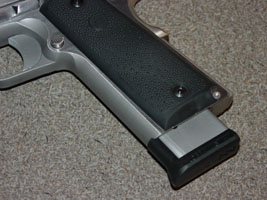
Figure 3: MarkCO's Dan Wesson Razorback with extended 10-round CobraMag
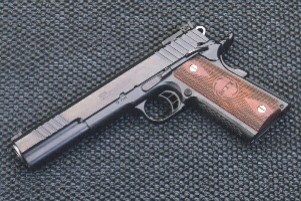
Figure 4: Example of a "longslide" 1911 (STI Trojan 6.0).
But what about making a shorter 10mm 1911? It can be done, but creates some problems that you can probably guess at by now. The lighter slide tends to elevate slide velocities, making for reliability problems unless you compensate with very heavy recoil springs. Even if you bite the bullet and use a heavier mainspring and an EGW firing pin stop, and a bull barrel, and a buffer, you are still going to need a hell of alot of recoil spring to make the gun work (say 22+ pounds). And more recoil spring means more forward battering, and more sensitivity to jams caused by a less than firm hold on the gun. Furthermore, 10mm tends to lose alot of velocity as you shorten the barrel, meaning that your ballistic advantage over .40 S&W is going to get depressingly small from a "sawed-off" 10mm. Even traditional .45 ACP guns will, on average, have more reliability problems as you shorten the barrel & slide, and 10mm tends to amplify these effects. A 4" barrel should be the absolute shortest you should go with a 10mm 1911, and you will probably want a professional pistolsmith to sort out the gun so it is truly reliable. Kimber has made some 4"-barreled .40 S&W guns that would be a good starting point if you really want to go down this road.

Figure 5: An example of porting (by Mag-Na-Port).
Compensators are muzzle attachments that reduce recoil by redirecting the gasses coming out of the barrel. Unlike porting, compensators actually reduce the apparent recoil forces, to the point where they force you to use lighter recoil springs for the gun to function reliably. Like porting, compensators can dramatically increase the noise level and apparent blast effect produced by the gun. The other main disadvantage of compensators is that effective compensators are relatively bulky and increase the overall length of the gun. For this reason, compensators are not really practical outside of certain competitions that allow them. As with porting, a 10mm gun can make excellent use of a compensator, due to the high pressures the cartridge generates.
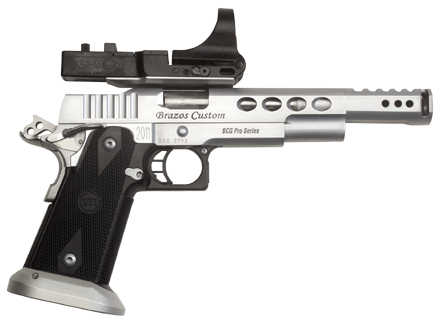
Figure 6: An example of a custom 1911 with a compensator (by Brazos Custom).
Now we can turn our attention to “softer” aspects of the 10mm 1911; things that make the gun easier and more pleasant to shoot, but do not directly impact on function. These thoughts could apply to any 1911, but have particular bearing on a 10mm.
Heavy bull/cone barrels can have a small functional impact, as their extra mass may slightly delay unlocking. They also have the subjective benefit of reducing muzzle jump and felt recoil. Although fairly common in .45 ACP guns, they are almost never seen on 10mm guns, where their benefits would be most obvious. Note that some pistol competitions (e.g. IDPA) do not allow bull barrels.
As you increase the recoil of a weapon, ergonomic shortcomings become much more obvious; guns that feel reasonably comfortable when chambered in lesser calibers may pinch, rub or poke you unpleasantly when they are launching full power 10mm ammunition. You definitely want any sharp edges on the gun taken care of. A well fitted beavertail grip safety will also be more comfortable than an old Colt-style grip safety, which will tend to poke the back of your hand a bit even if the hammer doesn't bite you. Which one you choose is mainly personal preference, although I would avoid grip safeties with “speed bumps,” since they will be less comfortable than a grip safety with a smooth surface. I would also suggest using a flat instead of arched mainspring housing, and avoiding mainspring housings with very aggressive textures such as 20 LPI checkering. The raised edges of the arched mainspring housing seem, at least to me, less comfortable under heavier recoil than a flat mainspring housing blended into the frame. However, ergonomics are a very personal business; use whatever works best for you.
There is much to recommend beavertail grip safeties; they prevent "hammer bite," give you a higher grip on the gun, and provide a more comfortable grip than the older Colt "GI-style" grip safeties. However, there are other ways to approach the same ergonomic problem. An option for a gun with a GI-style hammer and grip safety is to re-shape the grip safety and grip area for a higher grip, and to shorten and re-shape the hammer to prevent bite. This produces a similar effect to installing a beavertail while retaining a more traditional look.
Figure 7: Colt Government Model with the grip safety & spur hammer modified (by Ted Yost).
Finally, to really optimize a gun to "fit" you, you might want to consider its weight balance… this isn't something people give much thought to, but there is a very interesting article about it here.
The Delta Elite developed an unenviable reputation for developing frame cracks, and generally being fragile. This was unfortunate, since Colt found and cured the design defect that caused the frame cracks very early on in the guns' production. Their solution was rather ingenious: they simply milled away the part of the frame that tended to crack! This problem aside, the Delta Elite is in fact a strong gun, with the frame and slide being made of high-quality forged steels.


Figure 8: Original frame design (left) and modified frame design (right).
Colt made some other design mistakes with the gun, though fortunately they are easily and cheaply corrected. Although Colt gave the gun a heavier slide, they otherwise sought to control the increased recoil energy simply by using extremely heavy recoil springs. In fact, it had two concentric recoil springs with a combined weight of 23 pounds (versus 16 pounds for a standard .45 of the same size). The result was that the Delta Elite had a very strange, pogo stick-like feel in recoil that was both uncomfortable and subjected the gun to excessive wear and tear as the slide slammed forward with excessive force after each shot. Strangely enough, the short recoil guide rod used in this system was almost always made of plastic, and tended to break prematurely. Fortunately the fixes for these problems are both simple and cheap.
Those problems aside, the Delta Elite in my experience is a very creditable handgun. The examples I have owned were accurate and reliable out of the box, with acceptable triggers ~6 pounds and the excellent subjective feel common to Colt 1911s. Like most Colts of that era, they tend to have sharp edges, unlike more modern guns that look like a used bar of soap. This is both a blessing and a curse; the guns look sharp and crisp, but the edges can be uncomfortable. I personally like Deltas a great deal, but I am a sucker for Colts in general and 10mm guns in particular.
Another common question about the Delta Elites is how to tell the pre-Enhanced from the Enhanced models. The major differences between the two variants are:
1. Standard trigger guard shape on pre-Enhanced, undercut trigger guard on Enhanced.
2. Vertical slide serrations on pre-Enhanced, angled slide serrations on Enhanced.
3. Commander-style (ring) hammer on pre-Enhanced, skeletonized hammer on Enhanced.
4. Narrow grip safety on pre-Enhanced, downturned beavertail grip safety on Enhanced.
Another difference is the top of the slide; on the pre-Enhanced models, the top of the slide is rounded. On the Enhanced models, it has a clearly flattened top. Most pre-Enhanced and all Enhanced versions of the Delta Elite have the modified frame design noted earlier. Functionally, there is really no difference between the pre-Enhanced and Enhanced models; choosing between the two is largely a matter of personal preference. There is also a Delta Gold Cup version with the standard Gold Cup trigger and adjustable sights. Colt also made many limited-production variants of the Delta Elite, such as the Elite Match 10, Combat Delta 10, Ultra 10, Elite 10/40, Delta 10, and so forth. These should be considered mildly collectable oddities.
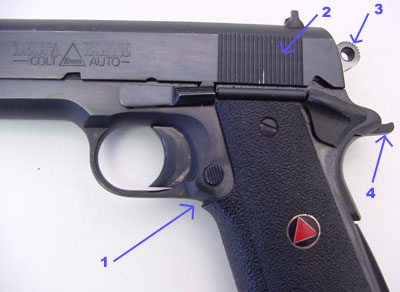
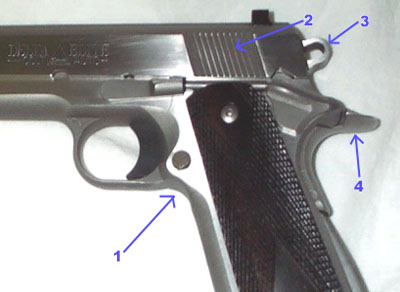
Figure 9: pre-Enhanced Delta Elite (left) and Enhanced Delta Elite (right).
Between the two, I prefer the pre-Enhanced versions. I don't care for the undercut trigger guard or odd beavertail grip safety on the Enhanced versions, and think the pre-Enhanced versions just look better.
The table below compares various high-performance loads in most of the popular autoloader calibers, along with 10mm Auto and .357 Magnum. I have sought to compare the highest performance loads I could find manufacturer data for in each caliber, and have intentionally omitted more marginal manufacturers, or ballistics from extremely long barrels that would unfairly inflate a caliber's performance. That is why you don't see the Winchester Silvertip 10mm load (175gr @ 1,290 ft/sec, but from a 5.5" barrel), or some of the .357 Magnum loads out there with monster ballistics from 6-8" barrels.
10mm: Cor-Bon 200gr Penetrator 1,200 feet per second 640 foot-pounds .357 Mag: Cor-Bon 180gr JSP 1,265 feet per second 640 foot-pounds 10mm: Cor-Bon 180gr JSP 1,320 feet per second 696 foot-pounds .357 Mag: Remington 165gr CL 1,290 feet per second 610 foot-pounds .357 Sig: Hornady 147gr XTP 1,225 feet per second 490 foot-pounds .45 ACP: Cor-Bon 230gr +P JHP 950 feet per second 460 foot-pounds .40 S&W: Speer 180gr Gold Dot 1,025 feet per second 420 foot-pounds 9x19mm:Pro Load 140gr +P 1,100 feet per second 376 foot-pounds .45 ACP: Federal 230gr Hydra-Shok 850 feet per second 370 foot-pounds 10mm: Pro Load 155gr Gold Dot 1,350 feet per second 627 foot-pounds .357 Mag: Federal 125gr JHP 1,450 feet per second 580 foot-pounds .357 Sig: Cor-Bon 125gr JHP 1,425 feet per second 564 foot-pounds .40 S&W: Winchester 155gr STHP 1,205 feet per second 500 foot-pounds .45 ACP: Hornady 200gr XTP +P 1,055 feet per second 494 foot-pounds 9x19mm: Winchester 127gr +P+ 1,250 feet per second 450 foot-pounds 10mm: Pro Load 135gr Nosler JHP 1,440 feet per second 627 foot-pounds .357 Sig: Cor-Bon 115gr JHP 1,500 feet per second 575 foot-pounds .357 Mag: Cor-Bon 110gr JHP +P 1,500 feet per second 555 foot-pounds .40 S&W: Cor-Bon 135gr JHP 1,325 feet per second 526 foot-pounds .45 ACP: Cor-Bon 185gr JHP +P 1,150 feet per second 543 foot-pounds 9x19mm: Federal 9bple 115gr +P+ 1,300 feet per second 430 foot-pounds It is clear that 10mm Auto offers greater performance with factory ammo than any of the major autoloader calibers. It is best compared to the .357 Magnum in terms of performance, with the added advantage of a larger-caliber bullet.
Recently, Ted Yost installed an Ultimatch AET in my Colt Delta Elite. His observations are below (originally posted on Pistolsmith.com).
Sean Smith suggested I post my observations on the installation and performance results from his new Delta retro rocket. First, the secondhand info I got was that Schuemann didn't think a 10mm was a good idea. Hence the unavailability of a barrel marked in 10mm - disappointing, but certainly not the end of the world. As far as the overall initial quality of finish on the product, I found it to be excellent - possibly the nicest finish in & out I've seen in a pistol barrel from anyone. As soon at the hood was fit, the barrel dropped cleanly into the lugs - no fitting required at all, in fact the barrel ranges above center. Not enough to be a problem, just enough to notice off-center firing pin strikes. Likely due to Colt's tolerances, not the barrel's. As to the frame cuts, I've always preferred the Wilson Nowlin ramp to the para/Clark cut, due to the ability to control the depth of the vertical impact surface more closely. This barrel was a para ramp cut, but installed quite nicely.
There is a lot of speculation about the gain-twist rifling, and the tapered lands. Opinions vary widely. I've had hot & cold experiences in gain-twist rifle barrels, and was skeptically cautious(or the other way around) about this one. Fouling was an issue I noticed in my .30 barrels, and jacket deformation was talked about, too. I never recovered any bullets to check that aspect out - it was speculation on the part of others, and they're still speculating. My .308 was great, but a similarly built.30-06 was disappointing. The scientific stuff could go on for hours I hope I never have the time to debate science and technology in a forum, because it will surely mean I have no work, no life, and the Mustang's become a minivan. But - I know what I like, and this thing shoots. I like that. I had installed a fluted Ed Brown cone type barrel in a parallel Delta project, and was impressed by the accuracy. I told Sean that price considered, the Schuemann was really going to have to be phenomenal to compare favorably. Live & learn. It was exceptional, putting 8 out of ten rounds into .850" at 25 yards. The other two rounds opened up the group to 1 1/4", and were definitely pilot error. I'm just not that good, and I prove it every time I shoot
To total it all up, it's a little more money, a little more work, and a little more accuracy. Hard to come up with a downside, unless it means more accuracy than you really need or can appreciate, and a higher cost for purchase and installation. It's probably not the barrel for everybody. It also seemed to clean up really easily - definitely a plus.
Several factors make this accuracy even more impressive than the impressively small 0.850" group size would suggest. First, it was with off-the-shelf factory ammo, not "match" ammunition or handloads developed specifically for high accuracy in the gun. Second, the gun was NOT built up as a tighter-than-tight fussy bullseye piece, and did not have any radical accuracy-enhancing modifications aside from the barrel itself. Third, the accuracy was not measured using a machine rest, but by a real human holding and firing the weapon. Schuemann's claim of 1.25" groups at 50 yards from a SV custom gun with this barrel suddenly seems very reasonable.
So should you buy one for your 1911? Maybe. The only real downside is the price of the barrel and its installation, and the fact that it provides a degree of accuracy that would be superfluous for most people. Most people looking for a match barrel for their 1911 would be equally well served by Schuemann's non-AET line of barrels, which are priced at a very reasonable $150, or a Kart or Bar-Sto barrel. It is also unclear exactly how much "practical" benefit there is to the various exotic features of the barrel, aside of course from the high overall accuracy. Still, it seems pretty clear that if you are looking for the "ultimate" 1911 barrel, the Schuemann AET line is the one to beat.
Wil Schuemann provides a great deal of detailed technical information on his AET barrel line on his web site, http://www.schuemann.com/
I have a Delta Elite that I have shot, I am guessing in the neiborhood of 25000 rds., I don't keep track, and it is not battered. I have shot mostly loads that were in the 180,000 Power Factor Range. I shoot downloaded 10MM, because I had this Pistol before the 40 was a hot item. Frank James has a Delta Elite, that I hate to guess how many rounds he has thru his, and Frank doesn't shoot wimp loads in his. He has the ugliest Heinie in existance. It is his daily companion. I see it about every 3 years. He sends it back to me to go over it. The only thing we have replaced has been the Tritium Front Sight, and that has nothing to do with the 10MM. However, changing springs and shok buffs on a regular basis is very important. You don't take a multi-thousand Dollar Race Car and change the oil once a year just for the Hell of it. I think you are trying to get an answer to a question that really doesn't exist. If you like the 10MM, get one and shoot it. If you think it is going to come apart then don't. I still think it is a very versatile Caliber, that is why I have it. Everyone I know that has a 10MM, has it for the same reason. Mine is the one gun I would never get rid of.
Sources: While the ideas in this article aren't exactly earth-shattering,
some of them are counter-intuitive at first. And I don't claim credit for
originating any of them; I learned them from some extremely knowledgeable and
helpful pistolsmiths over the past year or so (notes are alphabetical by last
name):
Dave Berryhill was the first person to clearly point out to me the Delta Elite frame modification illustrated above (which, luckily, mine already had from the factory).
Dane Burns provided a number of the ideas listed here: the applicability of the AFTEC extractor to 1911s using high-pressure cartridges, the (relative) unimportance of ramped barrels in 10mm handguns, and the problems associated with using excessively heavy recoil springs. He also confirmed the effects on timing of the EGW firing pin stop, and noted that the flat-bottom EGW firing pin stop is based on the original firing pin stop design for the 1911, which was chagned to make the hammer easier to cock.
Ned Christiansen pointed out on Pistolsmith.com how he determined that recoil spring weight and unlocking are not related to any significant degree in 1911-style pistols.
Richard Heinie's comments on 10mm 1911s can be read in their entirely here.
Paul Liebenberg of Pistol Dynamics has an interesting article on "lock time" that confirms the futility of relying on heavy recoil springs to control increased levels of energy in a handgun. You can read it in its entirely here.
Don Williams made similar suggestions to Dane's on 1911forum.com concerning 10mm recoil spring weights, commented on (positive and negative) effects of using a heavier mainspring, and the advantages of the EGW firing pin stop. Don also provided positive comments about the Metalform 8-round 10mm magazine, which mirrored my direct experience with the almost identical Colt 8-round 10mm magazine.
Ted Yost had some comments about AFTECs (the Series 80 incompatability in particular), recoil spring weights, and some comment about this page being "not unsafe or just plain stupid," which was comforting. Thanks, Ted! He also provided the comments on installing and test-firing the Schuemann AET barrel.
Final disclaimer: Although the information presented here is based on the ideas of the above individuals, this document is entirely my own work, and it should not be construed as being endorsed by any of the above. Any errors of fact are entirely my responsibility.